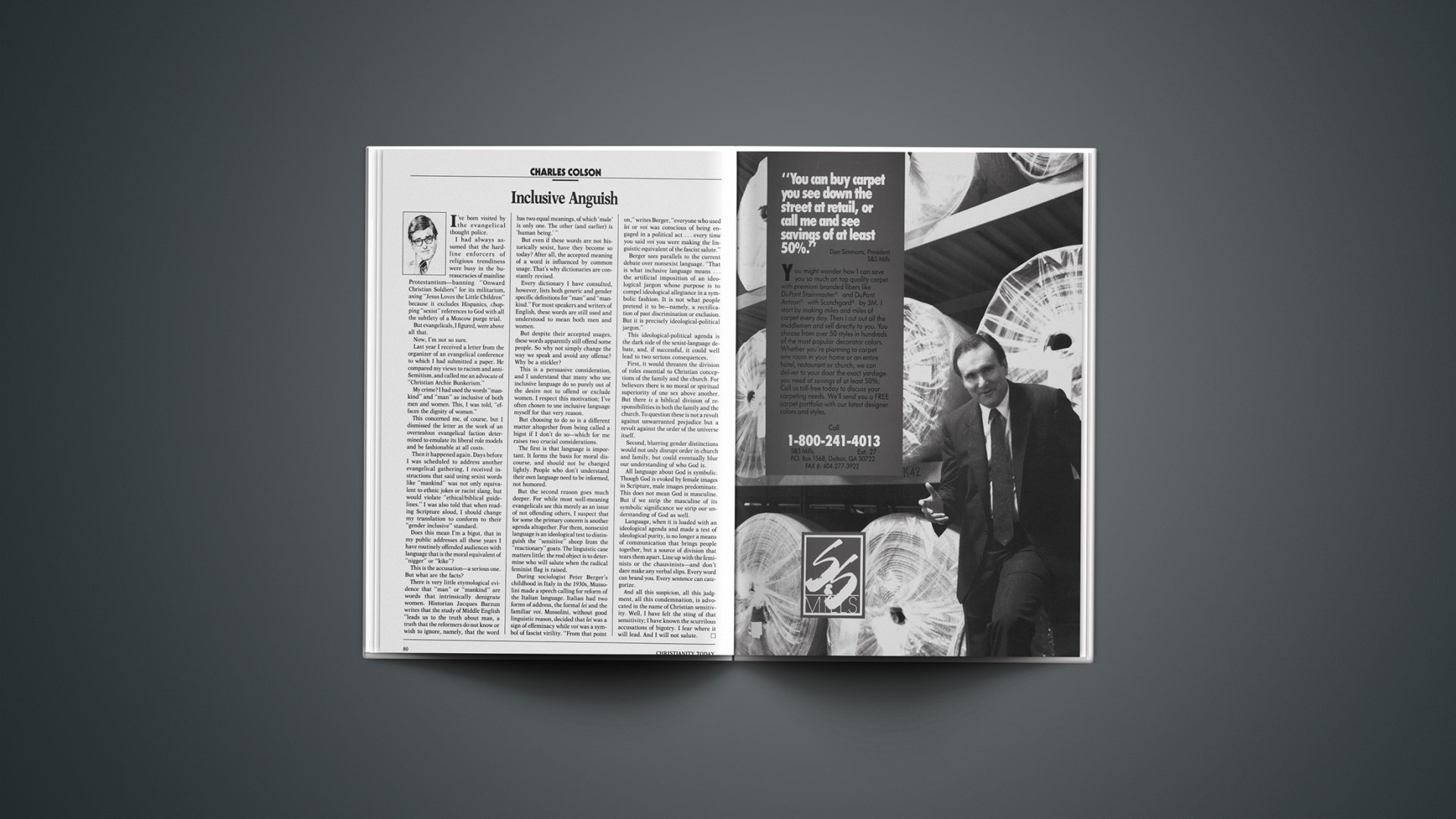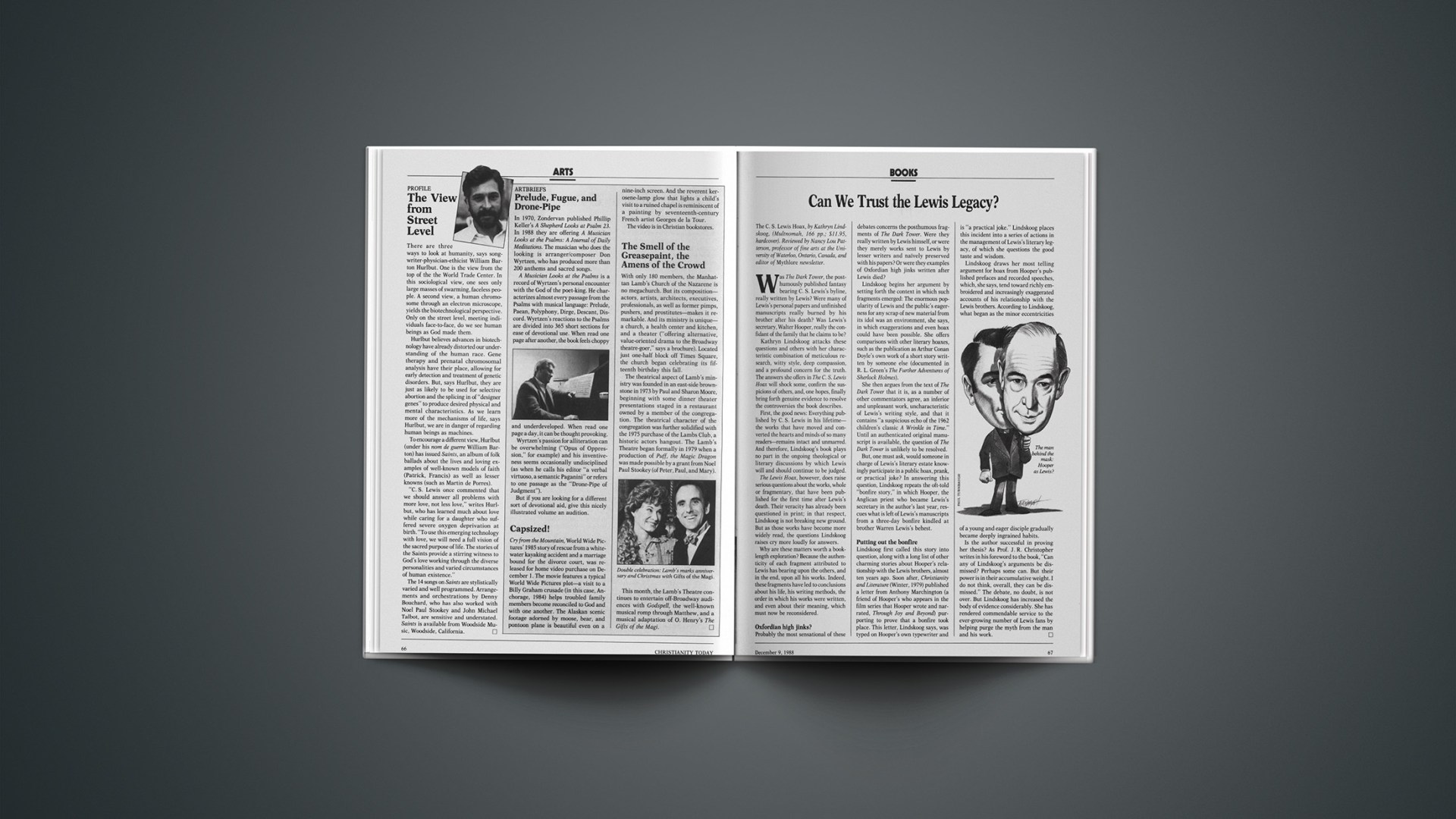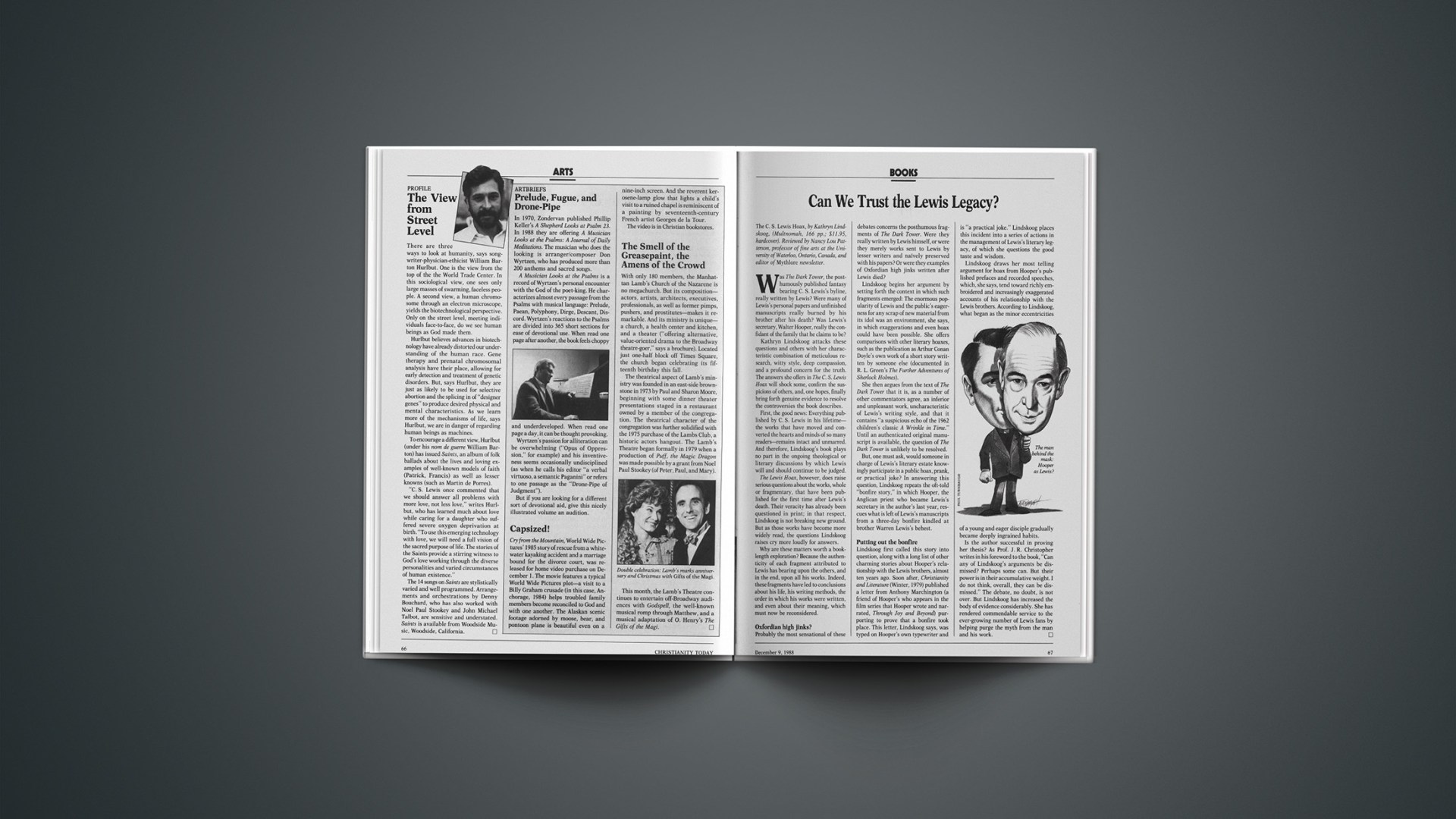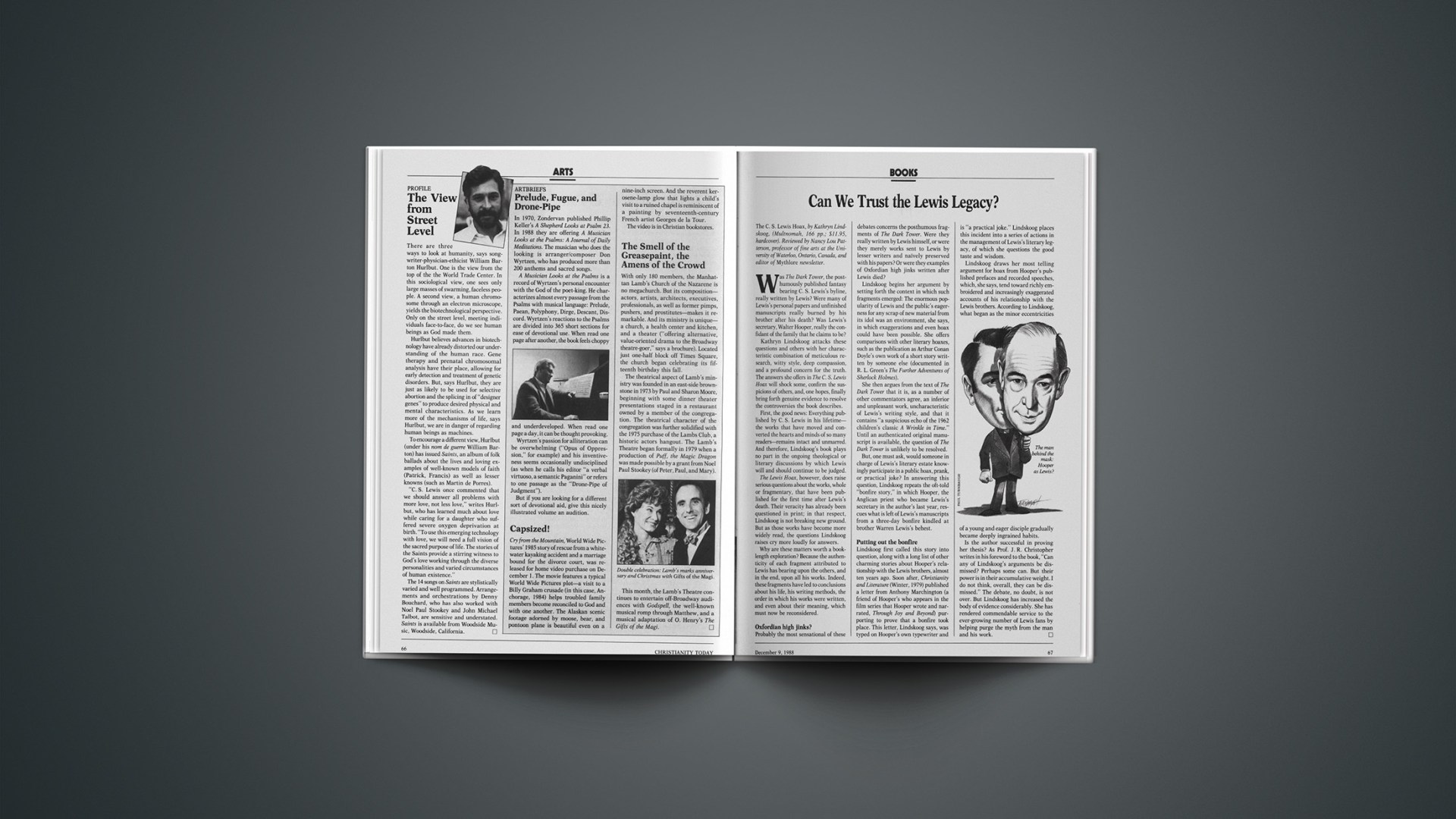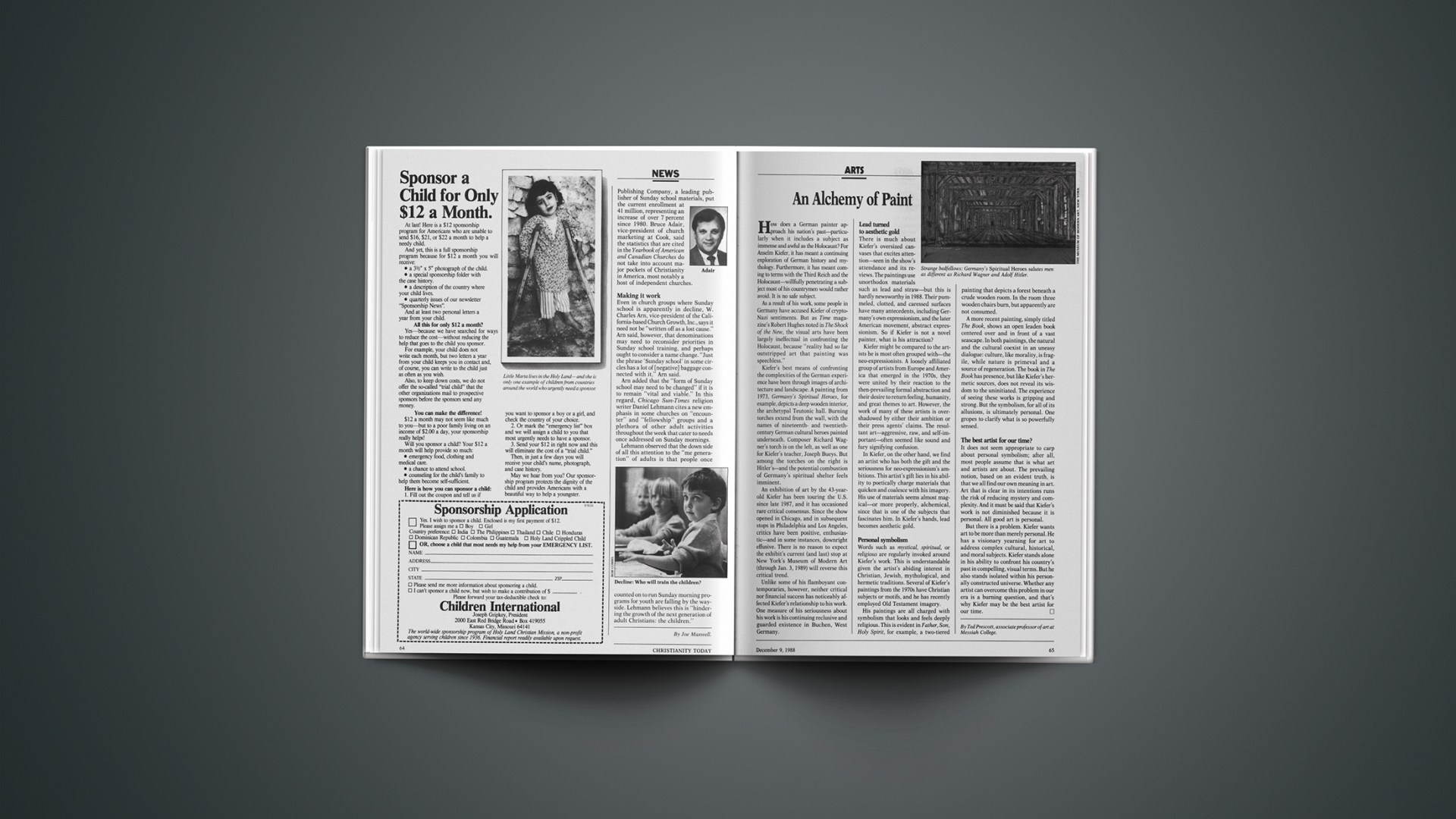“We hate to leave,” wrote Nancy the day before the moving van arrived. “You have been such a caring church family, and we thank God for you!” I sat in my office and read and reread that letter. It felt good to be a church that cares.
In the middle of the tenth reading, the telephone rang. It was Fred. He, too, was leaving. “We haven’t been to church in six weeks,” he said, “and no one called us. No one seems to care. We won’t be back.”
I felt sad and angry and guilty all at once. I knew there was some truth to Fred’s complaint. Our church seemed unable to care for him in the ways he needed. I felt the failure, and it didn’t feel good.
Why did our congregation care so effectively for Nancy’s family yet lose Fred through the cracks?
Primarily, I realized, because we had developed care strategies to respond to Nancy’s kinds of needs, but none of our caring structures fit Fred’s situation.
Every church wants to be known as “a church that cares.” Most congregations realize this won’t happen merely by employing a caring pastor. The “that’s what we pay the pastor to do” strategy is doomed to failure. Church members form the core of a congregational care system, so the key to effectiveness is having lay people respond to a wide variety of needs. But how? Which structures work best?
Below, I’ve grouped lay care strategies into six general categories. Some you’ll recognize as your own, but if you feel as frustrated about your “Freds” as I feel about mine, you may find the other strategies worth considering. I’ve found a mix of care strategies best meets the diverse needs we confront.
Friendship Strategy
When Nancy and her family moved here, her husband, John, wasn’t a Christian. His first involvement with our church was playing on our softball team. He made several friends, and six months later, when he was injured in an auto accident, the first people to visit the hospital were his softball teammates.
He had established relationships with Christian friends, and when he needed care, they responded. They mowed his lawn. They took care of his children when Nancy went to the hospital. John experienced Christian fellowship at a deeper level, and he began to pay attention.
Such care illustrates the social-network or friendship strategy. Any program that develops social relationships (Sunday school classes, sports teams, choirs, small groups) increases the availability of care.
There are some clear advantages to this approach. Because people already have a relationship with the person providing the care, they recognize the care as genuine and natural. It may be easier for them to ask for help. Also, friends sometimes are able to recognize needs before people can bring themselves to ask for help-a major advantage.
Care provided by a friend also helps build long-term relationships. The care John and his family received from the softball team led to lasting friendships, which led, in time, to John’s willingness to consider making a commitment to Jesus.
The limitations of this approach? First, friendships don’t always make it easier for people to share their needs. Some people find it easier to ask for help from a person they don’t know, such as a counselor.
In addition, this strategy works only for people with established social relationships in the congregation. People who are new to the church, who have relatively low social skills, who are on the fringe, or who have had relationships disrupted through divorce or death of a spouse may not find care.
Finally, a friendship strategy is rarely adequate for major or long-term traumas. When a child dies, when a person is diagnosed with a chronic disease, or when a young father is killed in an auto accident, the needs almost certainly exceed the care available within social relationships.
No congregation can thrive without a friendship care strategy. Every congregation will need, however, to develop additional strategies to respond comprehensively to the needs of the congregation and community.
Shepherding Strategy
Another approach is the shepherding strategy. The care providers are official representatives of the congregation (usually elected, such as deacons and deaconesses), and the congregation is divided into care groups (often on a geographical basis) with each group assigned to one representative. The representatives contact the people on their care lists to inquire about needs and to offer help.
Bill used this approach better than anyone I’ve met. After being elected a deacon, he was assigned a list of families to shepherd. He prayed daily for each member of each family. He called them at least monthly. He sent cards on birthdays and other special occasions. He regularly visited each home and in turn invited families from his list into his own home. This regular contact, combined with Bill’s sincere and direct style, resulted in many opportunities for ministry.
Bill tells of a man unresponsive to his phone calls for over two years. Every offer to meet personally had been refused. However, when the man found out his father was dying of cancer, he called Bill and shared his concerns. Bill’s persistence made it possible for him to care when the opportunity came.
This approach boasts several advantages. Because the care providers are an identifiable group, they can be trained. Bill’s training as a deacon raised his skill level and confidence. He knew his limits and that he could take advantage of other resources.
Bill identified another advantage: some people responded differently to him after he became a deacon. He visited one woman in the hospital who said, “Thank you for coming. Now I feel like the church has visited me.”
Finally, because a shepherding strategy is more organized than the friendship strategy, it’s easier to ensure accountability. A care provider can be held responsible for caring for his or her people.
The limitations to shepherding strategies are also fairly easy to identify. First, since congregations typically include only members on their shepherding lists, the approach isn’t outreach oriented. Also, few congregations recruit enough shepherds to ensure consistent, quality care. One reason for Bill’s success was that he insisted on limiting to eight the number of families on his list; he felt unable to do a good job with more.
Finally, if the care providers have management responsibilities in addition to their shepherding, care easily gets lost among other priorities. Many deacons are expected to make personnel decisions, do long-range planning, and oversee other programs. Shepherding strategies rarely work well under these circumstances, since care tends to be postponed until other tasks have been completed.
If care providers are not overburdened or distracted by other concerns, however, a shepherding strategy can work well.
Counselor Strategy
Six months after Fred left our congregation, he called again. He was eager to let me know how things were going, and he wanted to apologize for the combative sermon he’d delivered when he left. “I realize now,” he said, “that I was not ready to be helped.” He explained how he had been helped in many ways by the lay counseling program of a nearby church.
“It was the kind of help I was willing to receive,” he said. “I don’t know why I couldn’t receive yours, but I didn’t want to go to that support group.”
Many others, like Fred, find counseling a lifeline in times of need. A counselor may be lay or professional. There are, however, common features of all counseling care systems. The care provider has a well-defined role-neither friend nor institutional representative, but counselor. The agenda for the relationship is therapeutic rather than social or institutional. In addition, typically care is provided at regularly scheduled times, and people needing care must take the initiative to make an appointment.
The advantages: the care providers are usually far better trained than in most other strategies. Another major advantage is that a person needing care doesn’t have to be part of the congregational social network. Anyone can make an appointment. This approach, therefore, is more outreach oriented than either of the first two.
The limits: many people resist help provided by a counselor because of the social stigma. Economic circumstances present additional barriers to receiving care, since counseling can be expensive.
Counseling can be an excellent addition to the care strategies of a church. It cannot make up for inadequate friendship opportunities or the absence of shepherds, but counseling has an important place in any comprehensive care plan.
Body-Life Strategy
After his sermon, Pastor Smith invited the congregation to join him in prayer. “While you continue to pray,” he said, “I want to give you an opportunity to respond to what God has been saying to you today. If you need to receive God’s healing love this morning, I’d like you to indicate your willingness by raising your hand. Then I’ll pray for you.” As people responded, he acknowledged each hand. After a few moments he prayed publicly for those who had identified themselves and invited them to come forward after the service to continue in prayer and to receive counsel.
This is the kind of care provided by a body-life strategy. Unlike other strategies, which provide care in a private setting, this offers care in public, community settings.
Some churches use this strategy as one of the central features of their care system. They often provide a section of the worship service or a special service dedicated entirely to the sharing of needs and to public responses to those needs. A person in such a service may come forward and explain that she has lost her job. The pastor thanks her for sharing and asks several people from the congregation who have experienced the loss of a job to come forward to pray for her. They lay hands on the woman and pray. The service may move on to other concerns while a small group of people continues to pray about the woman’s specific needs. The entire caring event is public, a response of the whole community to individual needs.
Advantages? First, care is immediately accessible. You don’t need well-developed friendships or lists or counseling centers. Second, care and worship are clearly connected. Care stands as an integral part of church life. It can, therefore, shape a community of faith in profound ways. It’s difficult to maintain an unreal image of ourselves if week after week we publicly acknowledge our needs and our struggles.
The primary weakness of a body-life strategy is providing continued care. Needs expressed in a meeting may require more than a short-term response. It will be difficult, for example, for someone to come forward every Sunday to say, “I still have cancer.” Because this strategy is more responsive to acute than to chronic needs, it functions best in conjunction with other strategies better suited to long-term care.
In addition, care organized in this way can be dependent both on the emotional climate of the congregation and on the worship leader. A consensus inevitably forms as to what is acceptable to admit, and people whose struggles violate the social or ethical norms of the congregation may not want to voice their problems. Since care is available only to those who state their need in public, it often limits care to those who are new to the congregation (they have little to lose if rejected), those who are extremely well integrated into the church family (they have built a level of trust), and those whose personality allows them to go public with their needs.
Body-life strategies can be effective. Even congregations that don’t use them as central elements can occasionally use this strategy to develop a climate conducive to care.
Support-Group Strategy
When Mary made an appointment to see me, I was afraid it would be a difficult session. She’d been through a series of struggles in the six months since I’d last talked with her. Our previous conversation had consisted of my listening to her explain how no one understood her problems.
To my surprise, her first words this time were, “I’ve found a group of people who understand me.” She had acted on my suggestion to attend our Adult Children of Alcoholics group. There she discovered people who had experienced what she was experiencing and who were able to care for her.
Our congregation has many support groups, and I can’t imagine how we’d survive without them. Alcoholics, victims of sexual abuse, people with fragile sexual identities, people with cancer, people with physical disabilities-the list of people whose needs could be responded to with a support-group strategy is long. We’ve found great small-group support through Overcomers Outreach (2290 W. Whittier Boulevard, Suite D, La Habra, CA 90631), which encourages the development of 12-step support groups in churches for families recovering from addiction to alcohol or other substance abuse.
On a recent Sunday, three people came forward after our service to commit their lives to Christ. Our senior pastor found that one person recently had been diagnosed with cancer, one was a victim of childhood sexual abuse, and one had a chemically dependent spouse. In each case we had a support group to respond to these needs. As a consequence, these people began their Christian life knowing God’s family could help in the most difficult of life’s struggles.
A second advantage is that people often will come to support groups who will not accept care extended in any other way. Because care is offered by people who share the particular struggle, people see support groups as safe places to receive care.
Finally, support groups are usually outreach oriented. As their existence becomes known in the community, support groups provide easy access to care for the unchurched, who are introduced to Christian fellowship at the point of felt need.
A minimum number of participants is necessary for a viable group, of course, and that is one limit to support-group strategies. Forming a support group for people with cancer, for example, may not work if you can identify only one or two people with cancer at any given time. So support groups may better suit larger congregations. Smaller congregations, however, can cooperate with other congregations or aggressively seek participants from the community.
In contrast to a counselor strategy, a support-group strategy puts people into leadership who are publicly needy. If you want to form a support group for alcoholics in your congregation, the group will need to be led by recovering alcoholics Some church leaders may be concerned at the prospect of giving leadership positions to people who have experienced major struggles, especially if the group is responding to socially stigmatized needs. Sensitivity to people’s anxiety as well as a clear understanding of the gospel will be needed to overcome resistance to ministry of this kind.
Even with these limitations, support-group strategies have enormous potential for outreach.
Team Strategy
“I blame myself,” Ralph said after a year on our deacon board. “I guess I just can’t do it. Even when I make the phone calls, I can’t do it often enough to get to know the people. I feel like I haven’t gotten anything done. I’ll be glad when my term is over.”
It wasn’t easy for us to hear Ralph’s discouragement. He was a gifted and caring member of our board. His honesty, however, was just what we needed. It stimulated us to make the transition from a shepherding strategy to a team strategy.
Some ministry was happening using a shepherding strategy, of course, but congregational growth made it increasingly inefficient and frustrating for many of the care providers. We were burning out some of our most gifted members by using a strategy that no longer fit our congregation.
The solution was to divide the deacons and deaconesses into teams. We no longer assign an individual to a list of church members; a team now shares the responsibility to respond to a specific kind of need. One care team takes care of shut-ins. Another responds to families experiencing medical crises. Other teams focus on new members of the congregation, people at risk of leaving the congregation, and several other recognizable pools of people.
The team approach is common in other areas within the church (Christian education, for example), but it hasn’t been emphasized as a care strategy. One of the best-known examples of a team strategy is the ministry of The Church of the Savior in Washington, D.C. In this case, all the ministries of the congregation, not just caring, are organized around what they call “mission groups.” To be a member of The Church of the Savior is to be a member of one of these groups. The target populations of these mission groups vary from residents of substandard housing to members of Congress. Each mission group, however, begins with the interests and calling of a group of people. Team members commit themselves to each other, to a set of spiritual disciplines, and to a set of ministry tasks.
Part of the potential of a team strategy comes from the singleness of purpose of these groups. Team members aren’t easily distracted because they are responsible for only one clearly defined ministry area. Another advantage is that team members can support each other and hold each other accountable. That greatly improves the motivation and enthusiasm of care providers.
Because of natural turnover, a team strategy requires attention to management. One team is often needed just to administer the others. A second potential limitation is the impossibility of forming a team for every conceivable need. The decision to target certain needs will mean that other needs won’t be targeted. For this reason, a team strategy needs to be coordinated with other approaches. Most congregations, however, can readily identify needs that can be dealt with effectively by a team.
Customizing a Plan
Clearly no single care strategy is free from limitations. A congregation that uses a single strategy limits its response to the needs around it. Here are some of the things I’ve learned about developing a comprehensive care plan:
Keep working on your system. Congregations change. A mixture of strategies that works today may not be as useful in five years and could need major overhaul in ten. Care systems need regular self-examination.
I’ve found it helpful, for example, to keep a written guilt list. Great ideas for ministry often come from looking for patterns in the things I wish I had time to do. Our support group for people with cancer didn’t get started until I noticed how regularly “visit cancer patients” showed up on my list of “things I feel guilty about not getting around to doing.” Now we have a team that ministers more effectively, more regularly, and to more people than I ever could have reached personally.
Include community needs. If I want to care more effectively for widows, why not include widows from the community rather than just those from within the congregation? A care plan is an opportunity to declare God’s love in practical ways to people who do not know of his love and grace.
Do what you can. An emotionally difficult part of developing a strategy is that in defining the kinds of care we can provide, we become aware of many needs we’re unable to meet. A lengthening guilt list is frustrating. That shouldn’t surprise us nor stop us from doing what can be done.
Careful planning and creative thought, enriched by consistent prayer, can produce a mixture of care strategies that touches lives in a variety of ways.
Who cares? The church does, in more ways than one.
Copyright © 1989 by the author or Christianity Today/Leadership Journal. Click here for reprint information on Leadership Journal.


